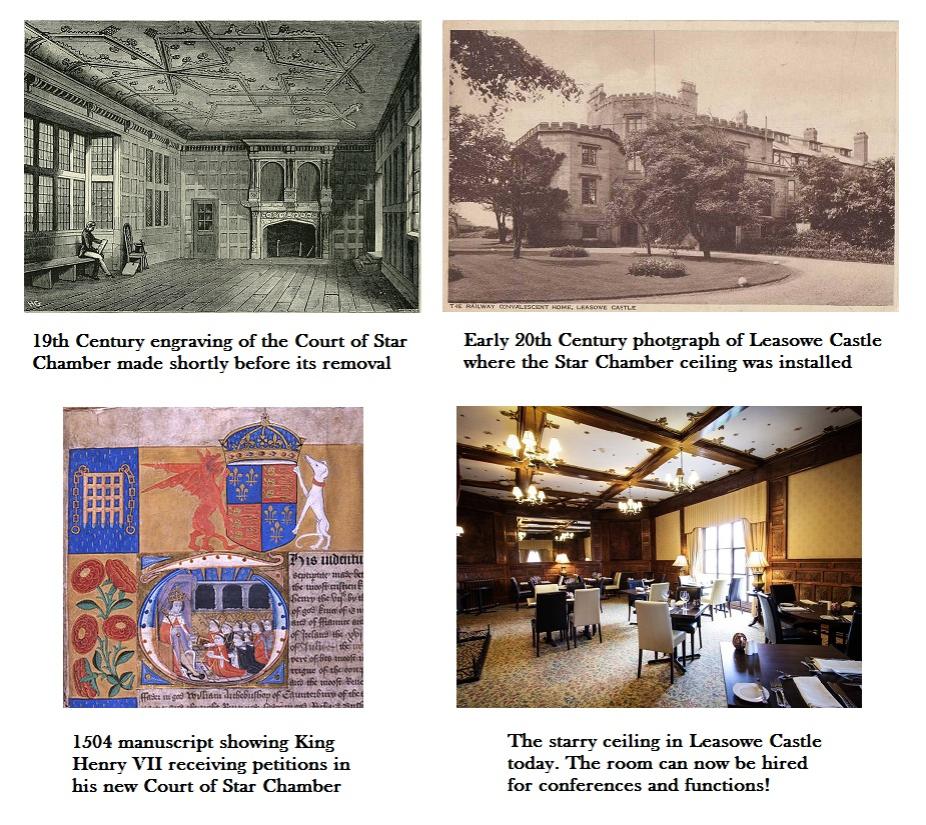PLEADING THE FIFTH - HOW AN INFAMOUS TUDOR COURT HELPED SHAPE THE US CONSTITUTION
Today the phrase ‘Star Chamber’ is synonymous with tyranny and the abuse of power by government but, ironically, this Tudor Court of Law was created to protect English liberty.
Under the Medieval feudal system, the local Lord of the Manor was usually responsible for law and order. The conflict of interests produced by this arrangement led to innumerable abuses of power of which folk tales, such as Robin Hood, offer the merest echo. After the chaos produced by the Wars of the Roses, the new Tudor king Henry VII wanted to curb the might of the warring upper classes so, in 1487, he passed the so-called Star Chamber Act, to bring England’s rebellious lords to heel.
This act created a special court, under the authority of the King’s Council, which could punish those who were so powerful they were effectively above the law. Henry’s new court sat in a chamber in the royal Palace of Westminster and took its name from the gold stars painted on the room’s ceiling.
Made up of privy counsellors and judges, but not a jury, Star Chamber’s original function was to be a court of appeal in cases brought by commoners against their feudal lords. Later, appellants of all classes were encouraged to bring their cases direct to Star Chamber thus bypassing the local courts controlled by the aristocracy. In addition to its appeal function, Star Chamber was also empowered to punish actions deemed ‘morally reprehensible’ but which were not technically against the law.
Though it could not pass the death penalty, Star Chamber could authorise ruinous fines, imprisonment and even torture, such as whipping and the cutting off of ears. However one of the main instruments of enquiry used by this court was a simple oath.
This oath merely required the accused to answer all questions truthfully. However, it placed defendants in what became known as the ‘cruel trilemma’ whereby they were forced to incriminate themselves, or face charges of perjury if they gave unsatisfactory answers, or be held in contempt of court if they refused to answer.
Another insidious weapon used by Star Chamber’s inquisitors was later described by the US Supreme Court:
“…The Star Chamber not merely allowed, but required, defendants to have counsel. The defendant's answer [to a charge] was not accepted unless it was signed by counsel. When counsel refused to sign the answer, for whatever reason, the defendant was considered to have confessed.”
Soon after he became king, Henry VIII placed Star Chamber under the control of his Lord Chancellor, Cardinal Wolsey, who became adept at using this court to persecute the king’s enemies. In particular, Wolsey used Star Chamber to develop what are now known as ‘inchoate’ crimes, that is acts which have yet to be committed such as attempt, incitement and conspiracy.
The later Tudors monarchs also used Star Chamber as a tool to combat ‘treachery and sedition’ and their successors, the Stuarts, used it as a way to bypass laws enacted by an increasingly troublesome Parliament. As a result, the court was finally abolished by the victorious Parliamentarians following the defeat of the Royalists in the Civil War but its legacy lives on.
When the original Star Chamber was demolished in the 19th Century, the eponymous ceiling was saved and installed in Leasowe Castle near Liverpool (which is now a hotel) where it can still be seen. Moreover, following their own revolution, the American architects of the US Constitution took steps to avoid creating the legal instruments of oppression used by Star Chamber. In 1789 the US Congress proposed The Fifth Amendment to the Constitution which declared that no person:
“… shall be compelled in any criminal case to be a witness against himself, nor be deprived of life, liberty, or property, without due process of law; nor shall private property be taken for public use, without just compensation…”
So, thanks to the Medieval Wars of the Roses, US citizens can now defend themselves by ‘pleading The Fifth’!
